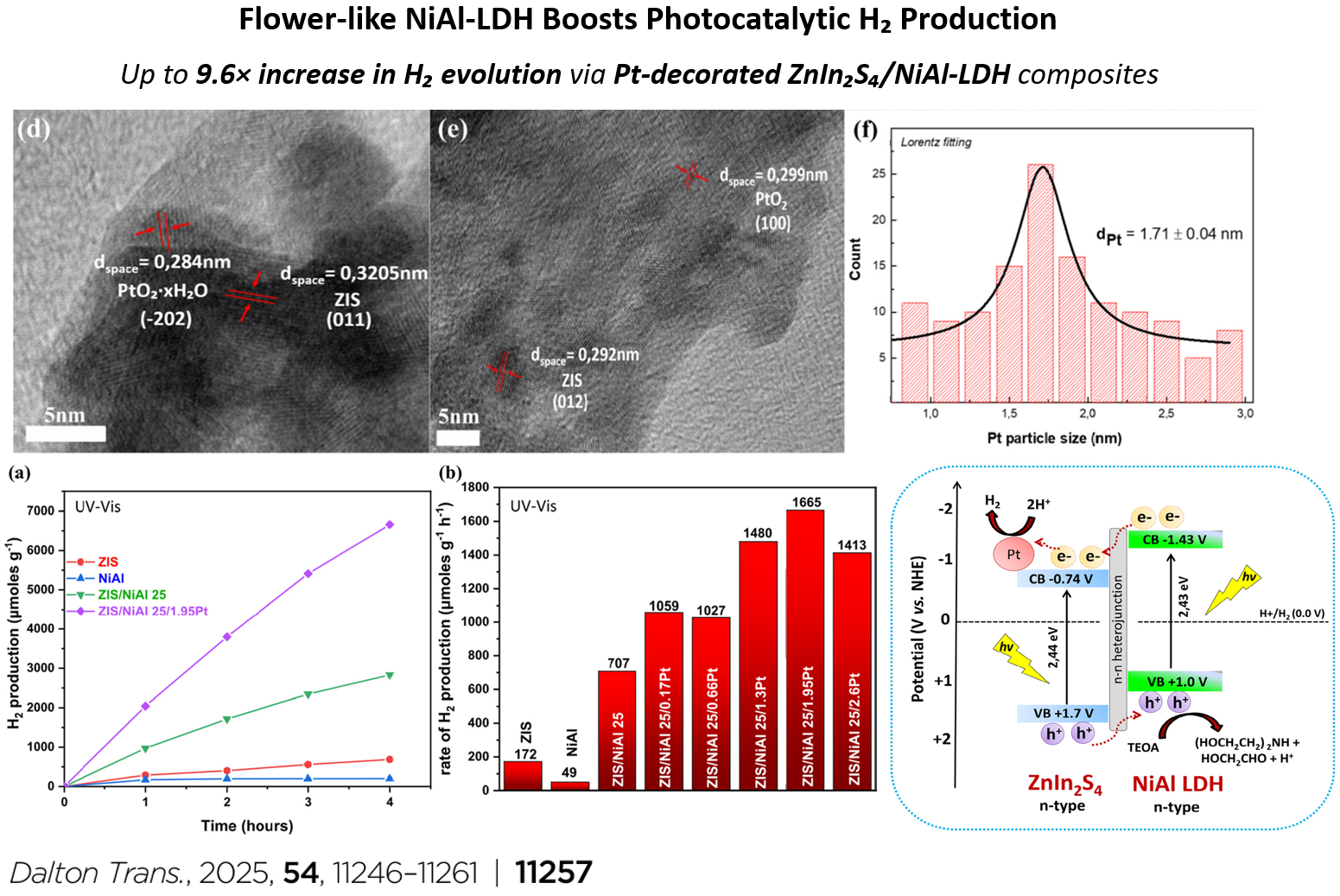
Flower-like ZnIn₂S₄/NiAl-LDH/Pt Heterostructures Boost Solar Hydrogen Production
Efficient, Stable, and Scalable Photocatalyst for Clean H₂ Evolution
Researchers at the Institute of Electronic Structure and Laser (IESL–FORTH) and the Department of Environmental Technology, Faculty of Chemistry, University of Gdansk have developed a highly efficient photocatalyst based on ZnIn₂S₄ nanosheets integrated with 3D flower-like NiAl-layered double hydroxide (LDH) and decorated with platinum nanoparticles. This innovative heterostructure demonstrates exceptional performance in photocatalytic hydrogen production under UV-vis and visible light irradiation, providing a green and cost-effective method for solar-driven hydrogen generation.
Performance and Innovation
The catalyst, synthesized via in situ growth of NiAl-LDH microflowers followed by photodeposition of Pt, achieves hydrogen evolution rates up to 1665 μmol g⁻¹ h⁻¹, outperforming pristine ZnIn₂S₄ by nearly 10-fold. The optimized Pt content (1.95 wt%) acts as an active site and electron sink, improving charge separation and enhancing photocatalytic activity.
Experimental techniques, including XRD, HRTEM, PL, XPS, and photoelectrochemical measurements, confirm the formation of a stable and well-contacted heterojunction. A proposed type-II n–n heterojunction mechanism describes efficient charge transfer from NiAl-LDH to ZnIn₂S₄ and subsequent H⁺ reduction on Pt surfaces. The material also demonstrates excellent stability over multiple cycles, with minimal Pt leaching and superior structural resilience.
Future Impact
This research paves the way for the development of low-cost, high-performance photocatalysts using earth-abundant, lead-free materials for sustainable hydrogen production. The ZnIn₂S₄/NiAl/Pt composite holds great promise for applications in solar fuels, green energy technologies, and photocatalytic water splitting systems.
Research and Publication Details
This study was the result of an international collaboration between the Institute of Electronic Structure and Laser – FORTH (Greece), the University of Gdansk (Poland), the Gdansk University of Technology (Poland), and the Institute of Physical Chemistry – Polish Academy of Sciences (Poland).
This work was carried out by Anna Souri (first author), Maria Zografaki at the TCMD laboratory – IESL-FORTH, and Leila Zouridiunder the supervision of Prof. Vassilios Binas (TCMD laboratory – IESL-FORTH). Prof. Binas also holds a position at the Aristotle University of Thessaloniki.
The TCMD – IESL team collaborated closely with Tomasz Klimczuk (Gdansk University of Technology), Kostiantyn Nikiforow (Institute of Physical Chemistry – Polish Academy of Sciences), and Prof. Anna Malankowska (University of Gdansk), combining expertise in material synthesis, structure, and performance evaluation. The project was jointly supervised by Prof. Anna Malankowska and Prof. Vassilios Binas.
Corresponding author from IESL: Prof. Vassilios Binas
Read the full paper:
Dalton Transactions, 2025, 54, 11246–11261
https://doi.org/10.1039/d5dt01018g
Published: July 4, 2025
Journal:Dalton Transactions (RSC Publishing)


